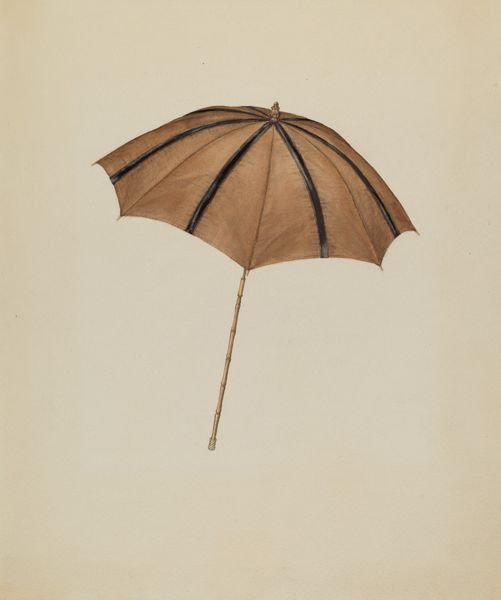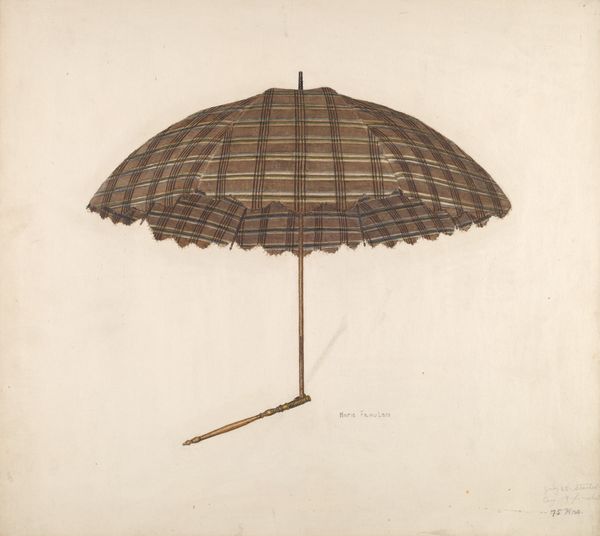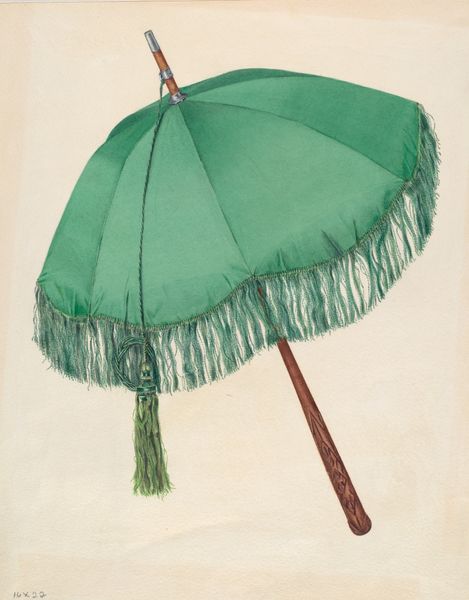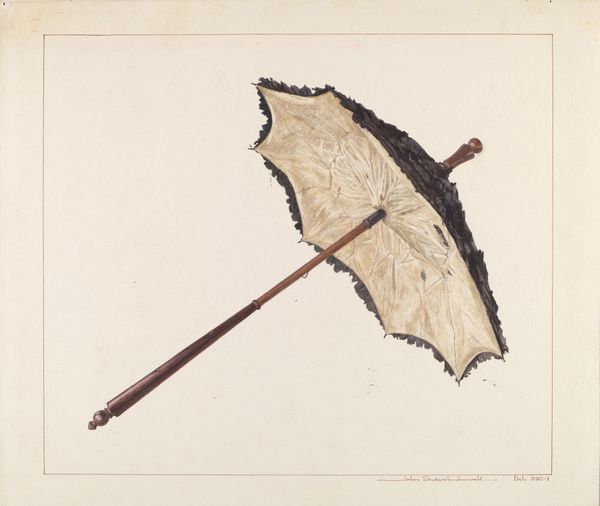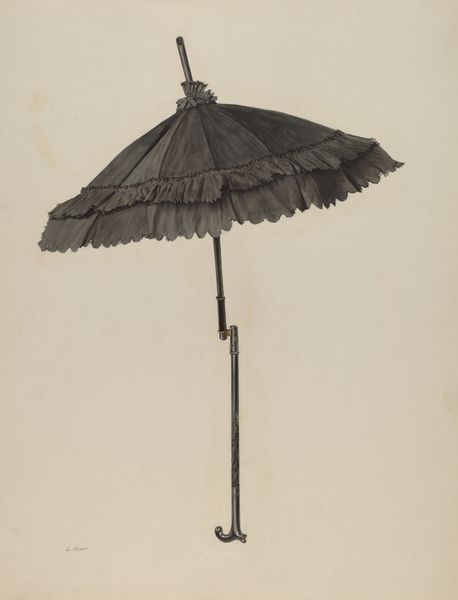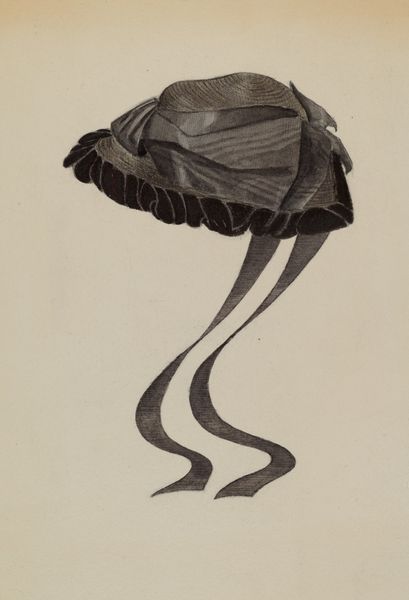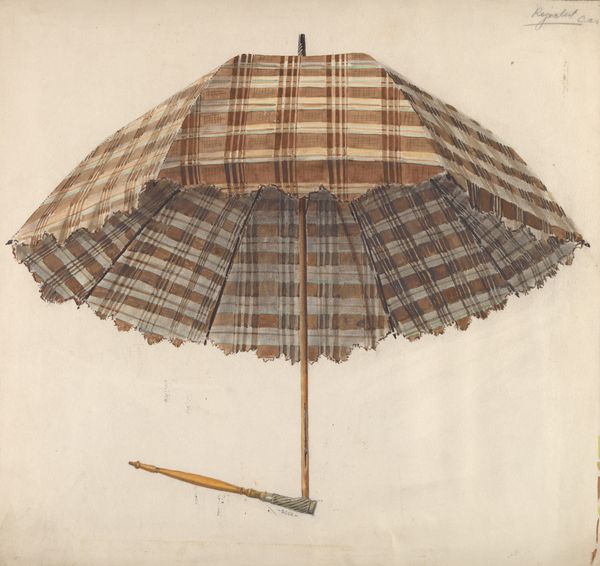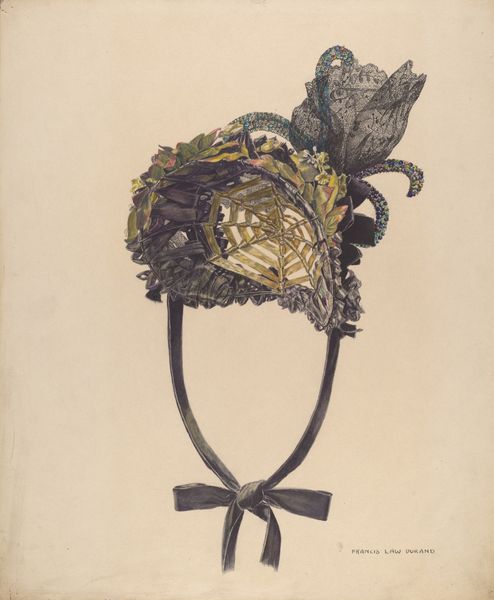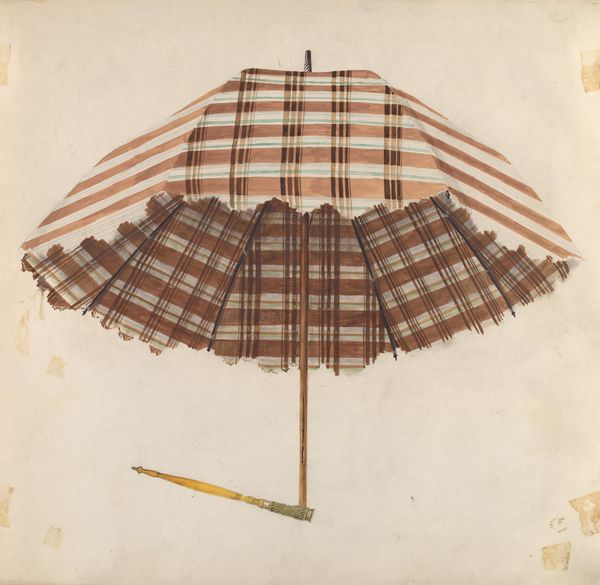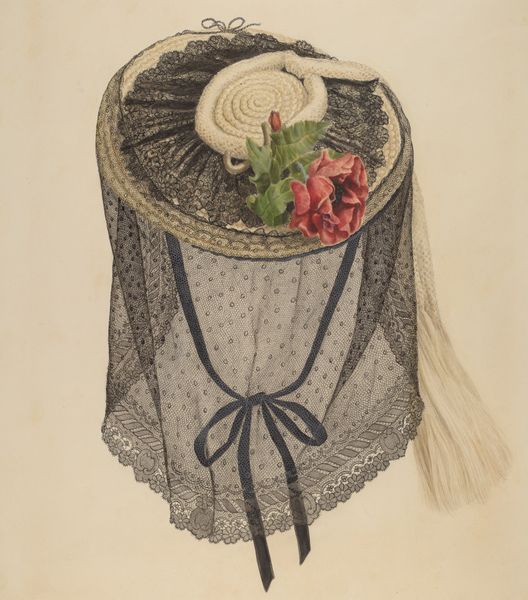
drawing, paper, pencil
#
drawing
#
charcoal drawing
#
figuration
#
paper
#
pencil drawing
#
pencil
#
academic-art
#
watercolor
Dimensions: overall: 29 x 35.6 cm (11 7/16 x 14 in.)
Copyright: National Gallery of Art: CC0 1.0
Curator: Welcome. Before us is Peter Connin's "Parasol," a drawing, made with watercolor, pencil, and charcoal on paper, crafted sometime between 1935 and 1942. What is your first impression? Editor: Somber, yet strangely elegant. The monochrome palette mutes the usual joy associated with a parasol, giving it an almost melancholic feel. Curator: Indeed. The black lace is very heavy in its visual presence, its dark complexity almost overshadowing the function of sun protection typically linked to such an object. But don't you see that the lace also points to very specific notions of class and style? The finery is its own statement, but of what? Editor: Precisely. The choice of black shifts its symbolic weight. It could reference mourning attire or even an element of subversive fashion in certain communities. It prompts questions of who is shielded by it and what kind of visibility that offers – or obscures – in society. The accessory speaks to how race and status interact with power. Curator: We may see it as an accoutrement denoting fragility. Parasols shielded delicate complexions. So the starkness suggests a more potent symbolism tied to preservation and protection of cultural memories, both personal and public, don't you think? Editor: That resonates, certainly, and makes me think further about protection: physical protection from the sun balanced with a deliberate act of self-conscious presentation within a social framework. Curator: It's a fascinating duality. Its image preserves ideas about that period while presenting the figure in a manner prescribed by fashion trends and socio-political mores. It almost presents two sets of coded signifiers, masking and showing. Editor: Looking at how these details of its era can be reinterpreted, what's striking for me is how it underscores the idea of looking, protection, presentation, class. Peter Connin presents an incredibly self-contained story, inviting continuous questioning from our side as viewers. Curator: Absolutely. Seeing its visual elements recontextualized over time creates a rich space for critical engagement across temporal divides. The more that society changes, the richer the narrative becomes, which may in the end challenge the values represented in its time. Editor: Well, it makes me see past its elegance, prompting inquiry into the lives of those using these symbols of their status in their day, while reflecting upon power and appearance even now. Curator: Agreed. There's an undeniable dialogue between image, symbol, and the human experience embedded within, isn't there?
Comments
No comments
Be the first to comment and join the conversation on the ultimate creative platform.

